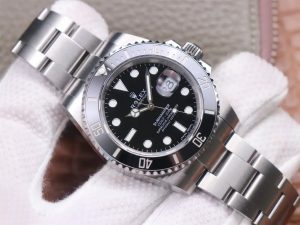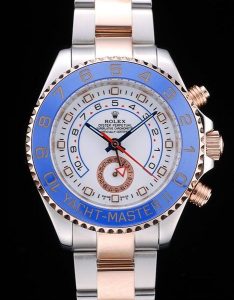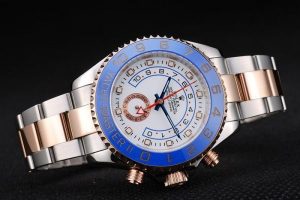Replica Rolex Craftsmanship and Legacy in a Transforming Luxury Landscape
The luxury watch sector continues to grapple with the aftermath of a pandemic-driven boom. Between 2020 and 2021, a perfect storm of low interest rates, disposable income, and newfound consumer curiosity propelled demand – and prices – to unprecedented heights. Brands and suppliers scrambled to expand production and staffing to meet the surge. Today, however, the landscape has shifted. Rising inflation, geopolitical tensions, and economic volatility have tempered buyer enthusiasm. China, once the largest importer of Swiss timepieces, faces a prolonged economic slump that has rippled across luxury markets. Meanwhile, the U.S. has emerged as the new leader in Swiss watch exports, buoyed by resilient consumer spending and a growing appetite for high-end horology. Analysts note that American collectors still lag behind European and Asian counterparts in per-capita expenditure, signaling untapped potential for growth. 
As competitors scale back production and adjust labor strategies to align with cooling demand, Switzerland’s independent titans – replica Rolex, Patek Philippe, and Audemars Piguet – remain largely impervious to market fluctuations. Unlike conglomerate-owned rivals such as Cartier (Richemont) or Omega (Swatch Group), these heritage marques operate with strategic autonomy, allowing them to sidestep the inventory imbalances plaguing the broader industry. Their ability to balance exclusivity with accessibility has fortified their positions, even as economic uncertainty lingers.
A central debate among enthusiasts revolves around whether luxury brands deliberately constrain supply to cultivate desirability. Industry executives emphasize the delicate art of aligning production with demand – a task one CEO likened to “producing one fewer watch than the market desires.” While Rolex’s stainless steel Submariners and Patek Philippe’s Nautilus models remain elusive, brands risk alienating loyalists if scarcity tips into frustration. Audemars Piguet, for instance, caps annual production of its Royal Oak “Jumbo” at 1,200 units despite manufacturing 50,000 watches yearly.
The consequences of miscalculation are stark. In 2017, Richemont spent €250 million repurchasing excess inventory from overwhelmed retailers, a cautionary tale underscoring the perils of overproduction. Today, brands increasingly rely on digital analytics to balance “sell-in” (retailer shipments) and “sell-out” (consumer purchases). Even Rolex, which commands 30% of Swiss watch sales, trimmed output by 2% in 2024 – its first reduction since the 2008 financial crisis – while still achieving a 5% revenue boost through strategic pricing.
Prospective buyers of fake Rolex’s iconic Submariner, GMT-Master II, and Daytona models continue to face extended waitlists, though secondary market premiums show signs of easing. Morgan Stanley and WatchCharts data reveal that certain references now trade below retail, hinting at incremental supply gains. Rolex’s expansion into temporary production facilities in Fribourg (operational in 2024) and a forthcoming CHF 1 billion flagship site in Bulle (2029) could further alleviate bottlenecks. These initiatives aim to elevate annual output beyond the current 1 million units, though the brand’s meticulous quality standards suggest any increases will remain measured.
With entry-level Swiss watch exports (under CHF 3,000) plummeting 15% in 2024, brands are exploring creative avenues to engage budget-conscious enthusiasts. The runaway success of Swatch’s MoonSwatch and MB&F’s MAD 1 has inspired imitators, with Breitling’s recent acquisition of Gallet signaling a push into accessible chronographs. Rolex itself pioneered this playbook via Tudor, its “affordable luxury” subsidiary launched in 1946. Such strategies allow brands to leverage heritage while democratizing access – a critical hedge against declining mid-tier demand.
The Anatomy of Rolex’s Enduring Dominance
Rolex’s aesthetic conservatism is deliberate. Models like the Submariner and Datejust have evolved incrementally over decades, avoiding fleeting trends. This consistency fosters instant recognition and cross-generational appeal. As Tom Pozsgay, head horologist at myGemma, notes: “Rolex’s genius lies in perfecting simplicity.”
Producing 800,000–1 million watches annually against far greater demand, replica Rolex masterfully stokes desire. Distribution through authorized dealers – with strict purchase limits – prevents market saturation, ensuring perpetual aspirational value. 
From proprietary 904L Oystersteel to in-house refined Everose gold, Rolex controls every element of its supply chain. The Cerachrom bezel and Parachrom hairspring exemplify its commitment to durability, resisting scratches, magnetism, and extreme conditions.
The 1926 Oyster (first waterproof wristwatch) and 1931 Perpetual rotor (self-winding mechanism) revolutionized watchmaking. Subsequent milestones – the 1953 Submariner (100m water resistance), 1955 GMT-Master (dual time zones), and 2012 Deepsea Challenge (12,000m depth rating) – cemented Rolex as an innovator.
From Sir Edmund Hillary’s 1953 Everest ascent with an Oyster Perpetual to partnerships with Roger Federer and James Cameron, Rolex intertwines its narrative with human achievement. Celebrity adherents like Rihanna and Jay-Z further amplify its allure.
Vintage Rolex models routinely outperform market benchmarks, with Paul Newman’s Daytona fetching $17.8 million in 2017. Discontinued references and limited editions often appreciate, blending emotional and financial ROI. 
Rolex thrives by embodying contradictions: timeless yet innovative, exclusive yet ubiquitous, luxurious yet utilitarian. In an era of economic flux, its calibrated scarcity, relentless R&D, and mythic storytelling offer a blueprint for enduring relevance. As the industry navigates uncertainty, Rolex’s mastery of balance – between heritage and progress, aspiration and accessibility – ensures its position not merely as a watchmaker, but as a cultural institution.